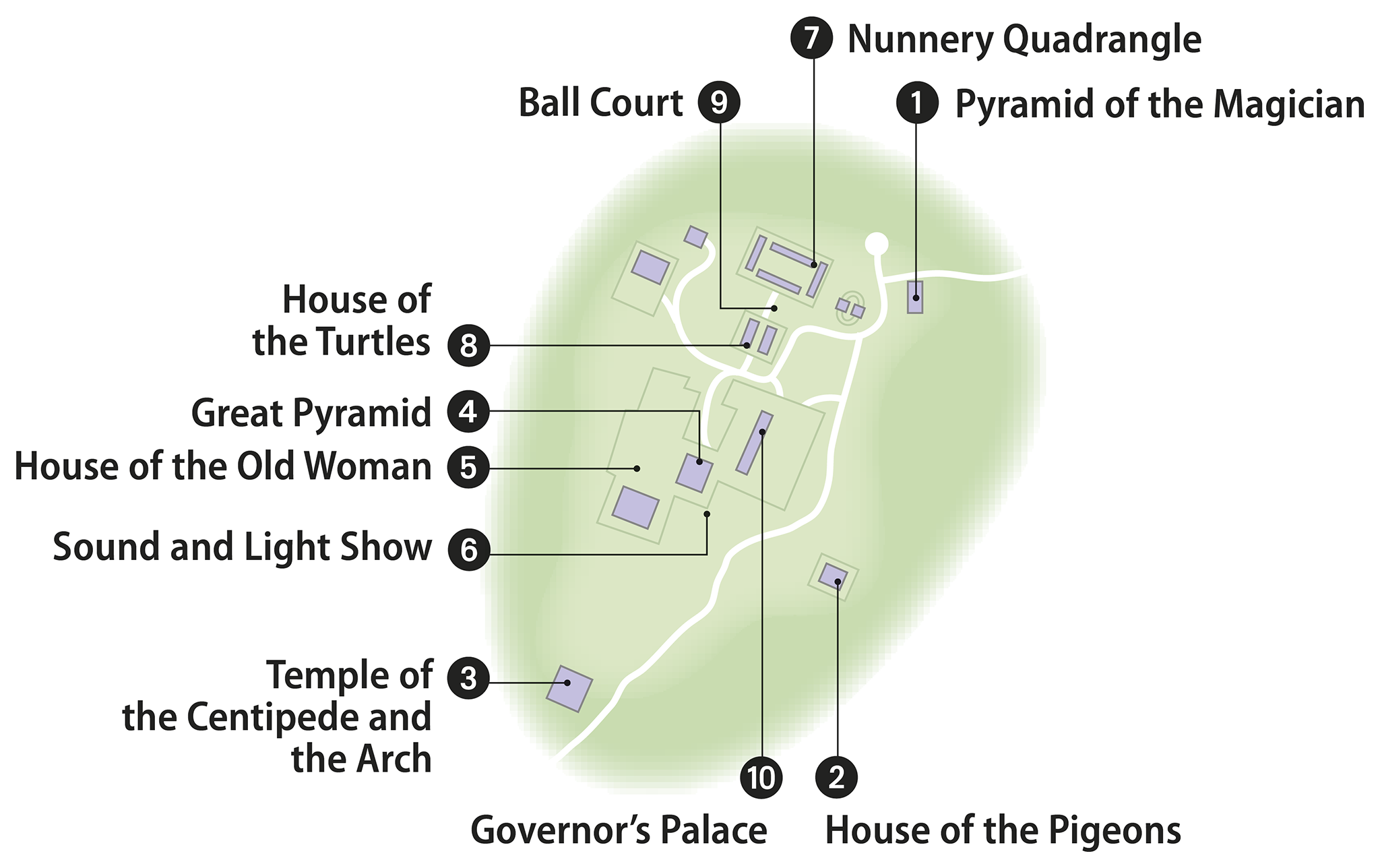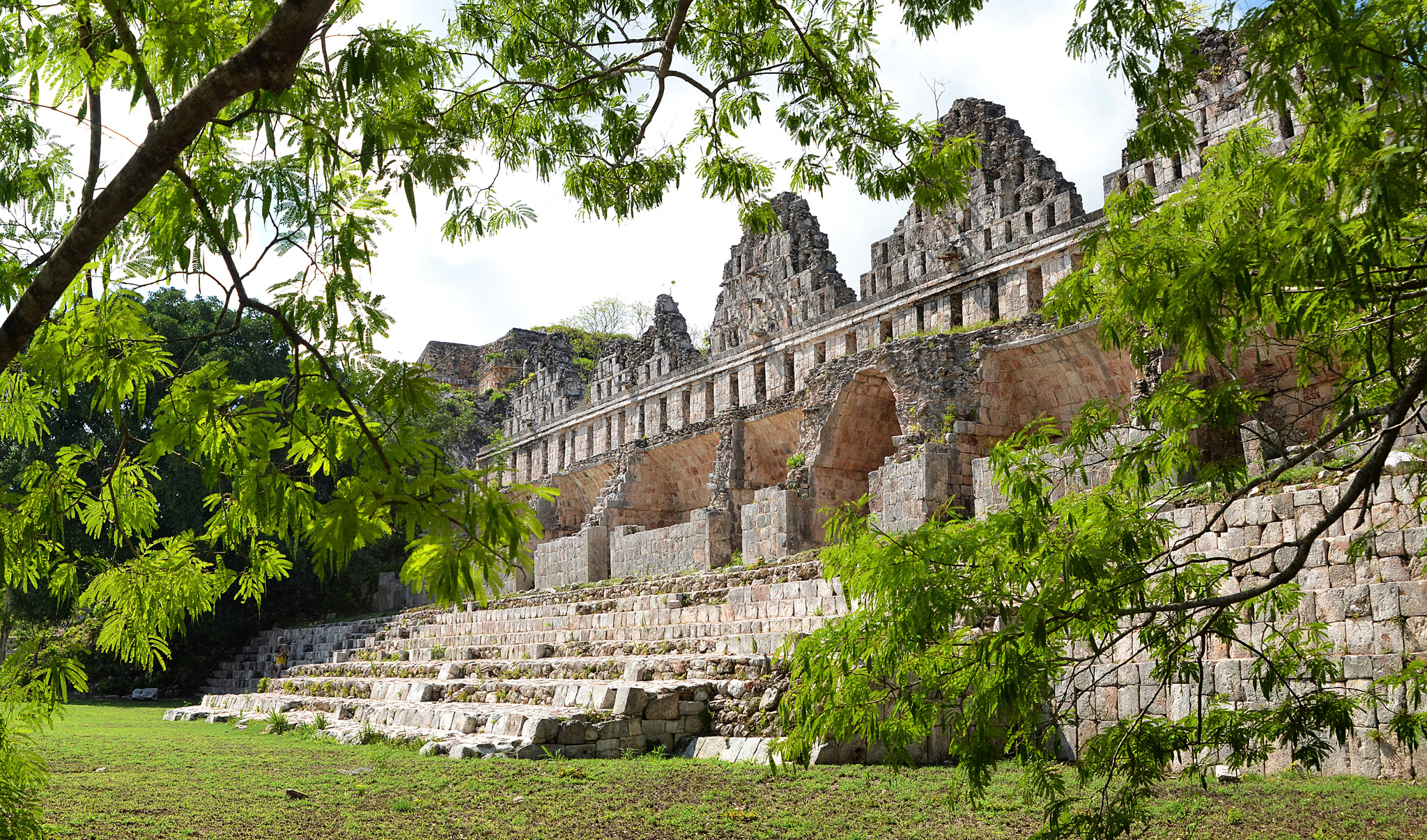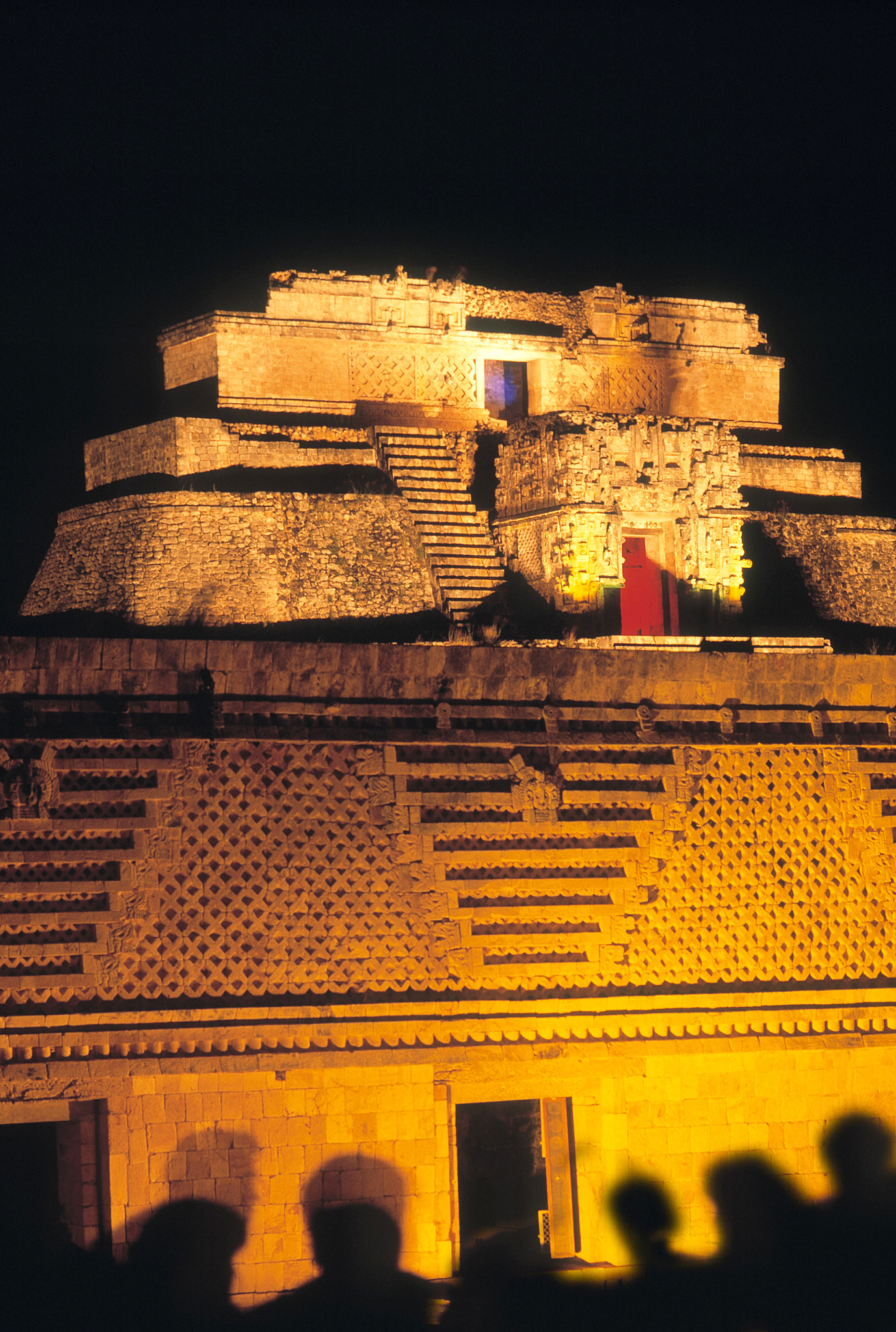
UXMAL
The most majestic of the Mayan cities, Uxmal (which means “three-times-built”) was a powerful city state from AD 700 to 900. Its spectacular buildings resemble gigantic stage sets and have been compared to the famous monuments of Greece and Rome.
NEED TO KNOW
![]() Open 8am–5pm daily; adm $15 Mon–Sat, give a tip for the guided visit; www.inah.gob.mx
Open 8am–5pm daily; adm $15 Mon–Sat, give a tip for the guided visit; www.inah.gob.mx
![]() Sound and Light Show: open winter: 7pm daily, summer: 8pm daily; adm $8
Sound and Light Show: open winter: 7pm daily, summer: 8pm daily; adm $8
- Arrive at the site early to miss the heat and the crowds. Allow at least a full morning to explore the whole site.
- Hal-Tun, set beside the road about a mile (2 km) north of the site, is a charming traditional Yucatecan restaurant with an airy, relaxing terrace.

Map of Uxmal
1. Pyramid of the Magician
Unusually, Uxmal’s best-known pyramid has rounded corners. The temple at the top is the legendary home of the Dwarf of Uxmal. Sadly, visitors can no longer climb to the top.

The grand Pyramid of the Magician
2. House of the Pigeons
This splendid complex consists of temples and palatial residences, once covered in sculptures. Early travelers thought the lofty roof comb above its central quadrangle looked like dovecotes, hence the name.

The impressive House of the Pigeons
3. Temple of the Centipede and the Arch
Unexcavated areas include the Temple of the Centipede. The sacbé (Mayan road) leading to it continued to the allied city of Kabah. An arch marks the boundary of Uxmal’s central core.
4. Great Pyramid
Many parts of this towering pyramid are older than the Governor’s Palace next door. Like many Mayan buildings, it was altered and added to many times but is now in poor condition.
5. House of the Old Woman
Only partly excavated, this large pyramid with a Puuc-style temple on one side is among the oldest major structures at Uxmal, dating from about AD 700. In Mayan legend, it is said to be the home of the Sprite’s Mother.
6. Sound and Light Show
Every night, Uxmal’s major buildings are dramatically lit up in varying colors, and there is a commentary on Uxmal in history and legend.

A building lit up for the Sound and Light Show
7. Nunnery Quadrangle
This elegant complex of four buildings was at the heart of Uxmal’s power and ritual. It was so named by a Spanish friar merely because its structure reminded him of a convent. Its facade’s intricate carvings symbolize the magical authority of the city and its rulers and their contact with the gods.
8. House of the Turtles
This small, delicately proportioned temple-residence is considered the archetype of the pure Puuc architectural style. The name comes from its decorative cornice, featuring a line of turtles carved in stone. This is a motif that is seen many times at Uxmal; it was associated with the rebirth of new life and the fertility of the coming of the rains.
9. Ball Court
Uxmal’s main Ball Court is smaller than the Great Court at Chichén Itzá. The original scoring rings are inscribed with dates from the year 901; those you see at the court are replicas.

A replica scoring ring at the Ball Court
10. Governor’s Palace
Often regarded as the finest of all Mayan buildings, this huge palace, over 300 ft (91 m) long, was built for the greatest of Uxmal’s rulers, known as Chan-Chak-Kaknal-Ahaw, or Lord Chak. Its huge frieze symbolizes the passage of time as well as the cycles of rain, sun, and rebirth.
UXMAL’S SPRITE
In Mayan legend, Uxmal was founded by an alux (sprite), who had defied the authority of a local king. When the king dared the sprite to build a house, the Pyramid of the Magician appeared overnight. On another day the sprite built the path to Kabah. The king’s last test was that they should both be hit on the head with hammers. The king died, but the sprite was protected by a magic tortilla and went on to rule Uxmal.
